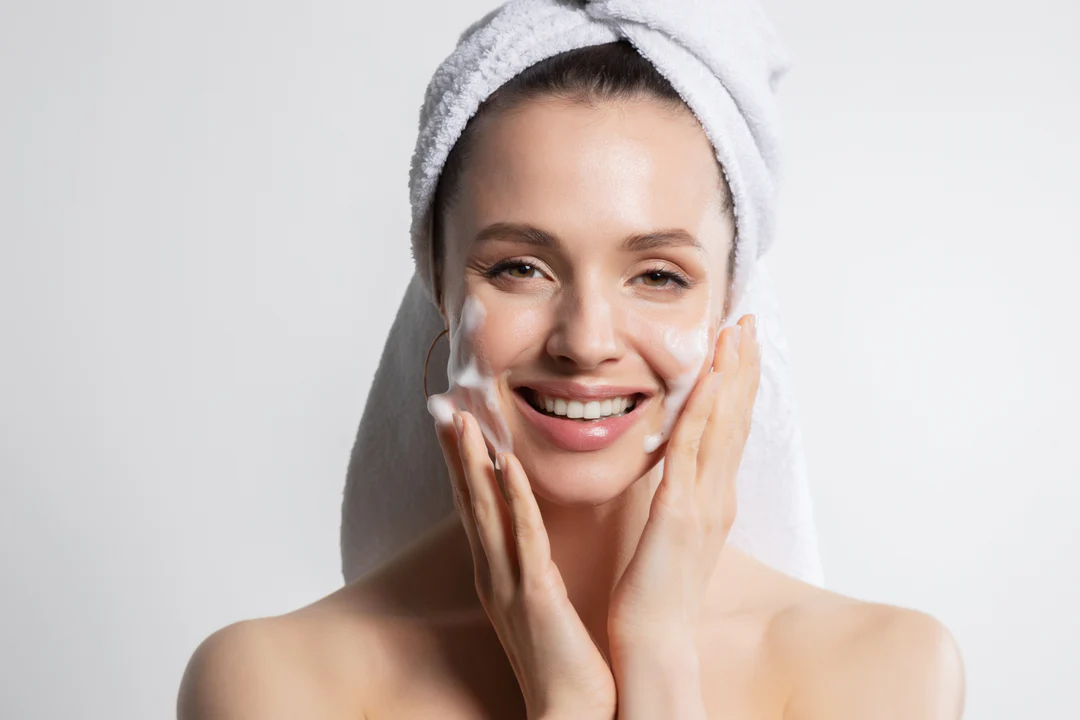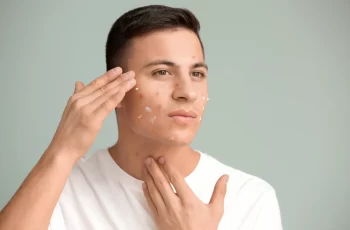Can I use Bakuchiol and Retinol?
There are always a lot of questions about retinol. Admittedly, it is the most confusing skincare ingredient and it takes some research to figure out how to use it properly. Admittedly, it is very effective for fighting signs of aging and blemishes. Retinol is not the only product that can provide these expected effects. In recent years, bakuchiol has been praised for providing the same effects to the skin without any side effects. Since these two ingredients have different benefits for the skin, it is not silly to wonder if bakuchiol and retinol can be used in the same routine. This is exactly the question we will explore today.
What is Bakuchiol?
Considered a natural vegan alternative to retinol, bakuchiol is found in the leaves and seeds of the psoralea corylifolia plant, and the use of psoralea corylifolia compounds in traditional Chinese medicine dates back centuries. This powerful skincare ingredient has a variety of skin benefits. Bakuchiol has antioxidant properties that can help reduce the appearance of fine lines and wrinkles, as well as skin pigmentation caused by sun damage and other environmental effects.
Bakuchiol is easy to incorporate into your daily skincare routine and can be used once or twice daily after cleansing your face. If the product you are using is a serum, it is best to apply it to clean skin before applying moisturizer and combine it with an AHA or BHA product to help exfoliate the skin. To reap the benefits of using bakuchiol, it is best to apply it in an oil form and use it at night. Don’t forget to apply SPF in the morning to protect yourself from the sun.
What are the benefits of bakuchiol?
The main benefits of bakuchiol are as follows:
Bakuchiol helps reduce fine lines and wrinkles
Bakuchiol can help restore skin firmness
Bakuchiol can refine skin texture and make skin look smoother
Bakuchiol can help improve uneven skin tone
Bakuchiol is more soothing than retinol, making it a good choice for those with sensitive skin
You will find bakuchiol used in anti-acne products as well. Due to its soothing and calming properties, it can help older skin problems with active spots and early signs of aging. For more information on this very clever ingredient and its skincare benefits, check out our dedicated blog post.
What is Retinol?
Retinol is a form of Vitamin A and the holy grail of skincare ingredients. His popularity within the beauty industry has earned him a huge following, from experts to skincare addicts. What makes retinol so good for your skin is its ability to produce exceptional skin results, from fine lines to blemishes. There are a few things to consider when using retinol, as there are many different concentrations to choose from. For more information on percentages to use, see our article ‘Which form of retinol works best?’
Some vitamin A-fortified products are available over the counter and on prescription. To avoid skin irritation, rashes or redness, start with the lowest concentrations of 0.25% or 0.5% and slowly build up to higher concentrations as your skin tolerates them. If you’re unsure about using a product, talk to your GP or dermatologist for advice to make sure it’s the best product for you and your skin.
What are the benefits of retinol?
Here are the main benefits of using retinol:
Retinol can help treat and eliminate spots and blemishes
Retinol helps clean pores and reduce their visibility
Retinol helps increase cell turnover
Retinol can increase collagen production and promote elasticity
Retinol reduces hyperpigmentation
Retinol can reduce and prevent fine lines and wrinkles
You can understand why this ingredient is considered a superhero in skincare and why it can benefit the skin in so many ways. We must not forget the precautions when using it if you want to know more about what retinol is and what benefits it has for skin care.
Can Bakuchiol and Retinol be used together?
Believe it or not, Bakuchiol and Retinol can be used together and are actually considered a highly effective combination. This is due to the calming properties of Bakuchiol. You will find that Retinol can work better without irritating the skin to the same extent. The most commonly heard advice when using these products is to use Bakuchiol if you find that your skin is too sensitive to the effects of Retinol. By combining retinol and bakuchiol, you get a powerful yet gentle formula for your anti-aging and spot-lightening skincare routine. Because bakuchiol is a natural companion to retinol, you’ll notice your skin looking healthier. Skin is smoother and more radiant, without any signs of redness or dry spots, which are often side effects of using retinol alone.
What are the benefits of using bakuchiol and retinol?
Here are some of the key benefits of using these two skincare ingredients together:
Bakuchiol has been scientifically proven to stabilize retinol and other skin-rejuvenating ingredients and promote skin absorption.
Bakuchiol’s soothing properties can help skin tolerate the benefits of retinol and potentially avoid signs of skin sensitivity and flaking.
Bakuchiol allows retinol to work longer because it supports the ingredient before the effects of light and air interfere with retinol’s actions.
Bakuchiol is a highly effective antioxidant that, along with the proper properties of vitamin A, protects the skin from environmental aggressors.
You may now have a clearer understanding of both ingredients and their skincare benefits, and are confident that incorporating them into your daily regimen will not have any negative effects on your skin. You will notice that your skin looks noticeably firmer and more radiant, with wrinkles and blemishes visibly reduced. A very important step to remember in your daily routine is to apply a broad spectrum SPF of 30 or higher every day to protect your skin from harmful and skin-damaging UV rays.
Don’t forget to check out our Instagram for new product launches, daily tips and videos! Don’t miss out on more skincare tips and expert advice on our YouTube channel! Click the subscribe button to visit our green couch, you won’t regret it!
DQH Knowledge drop: In your 20s, your skin cell turnover decreases. (Cell turnover is a key component in keeping your skin youthful.) You know what else slows down? Your collagen production. Starting in your 20s, collagen decreases by about 1 percent per year. Should you want to prevent fine lines and wrinkles, start by eliminating behaviors that contribute to premature aging. “If it’s bad for you, it’s bad for your skin,” says dermatologist Michel Somenek.
“Cigarette smoking reduces blood flow to the skin and causes premature wrinkling and a dull skin texture. Making the repeated pursed motion to inhale can also cause smoker’s lines. Alcohol and recreational drugs are toxins for the skin that damage its cellular structure and DNA,” Somenek tells us. “The faster you eliminate vices while you are young, the better chance your skin and body have to recuperate.” Also, adopting an anti-aging routine in your 20s is key. After all, the best offense is a good defense. We spoke to Somenek and experts Joshua Ross and Audrey Kunin to find out more.
Keep reading for the best anti-aging products for your 20s, according to skincare professionals.
Sunscreen
“We all know that the sun is the number one cause of skin aging and starting the prevention in your 20s is very important,” Ross says. “The majority of your sun damage won’t start to appear until you’re in your 30s, so don’t wait until you see it surface or you’ll be behind the curve. Stay ahead of it with a good-quality zinc-based sunscreen worn daily.”
Farmacy Green Defense Daily Mineral Sunscreen
An invisible sunscreen with SPF 30, plus botanical extracts meant to protect skin with tons of antioxidants. Bonus: It’s clean and fine to use under makeup.
Bareminerals Complexion Rescue™ Tinted Moisturizer Broad Spectrum SPF 30
Although we recommend you use your SPF and moisturizer separately, we also understand moments when you don’t have time or energy for that extra step. For those times, this bareMinerals moisturizer is a great thing to have on hand.
Vitamin C Serum
“A great introduction to anti-aging is to start with a vitamin C serum in your morning skincare routine,” Ross says. “It’s a powerful antioxidant that will neutralize free radicals and brighten the skin.” He adds that it’s a great way to counteract the effects of the sun’s harmful rays, which, as previously mentioned, are among the biggest causes of premature aging.
Drunk Elephant C-Firma™ Vitamin C Day Serum
The Drunk Elephant C-Firma is a lightweight serum that promises to give skin a glow by combining the brightening powers of vitamin C with ferulic acid, l-ascorbic acid, and vitamin E. The included sodium hyaluronate is meant to replace hydration loss, so you shouldn’t have to deal with any irritation.
Sunday Riley C.E.O. Rapid Flash Brightening Serum
This potent serum is jam-packed with vitamin C (15 percent, to be exact), which means it’s a potential superstar at both brightening skin and dousing it in antioxidants.
Peptides
Using peptides on your skin has many benefits, says Somenek. “The skin barrier is what defends the body against pollution, UV rays, bacteria, and toxins. It can be damaged by several everyday factors. Using topical peptides aids in building a stronger barrier,” he says. “Peptides comprise elastic fibers, which are a type of protein. These fibers help to make skin appear taut and firm. Peptides can also help repair damaged skin, relieve inflammation, and even out skin tone. Some peptides can kill acne-causing bacteria that is common in 20-somethings.”
Kunin agrees, saying, “Peptides are an excellent entry point for supporting collagen.” She recommends looking for face and eye treatments that contain these collagen-boosting powerhouses.
Charlotte Tilbury Magic Eye Rescue Cream
This Charlotte Tilbury super-emollient eye cream has a base of coconut oil and shea butter (read: it’s incredibly hydrating). Botanicals plus peptides are meant to help reduce dark circles and boost collagen, respectively.
This creamy moisturizer serves up potent collagen-boosting peptides and pycnogenol, and antioxidant-rich vitamin C. “Instead of sitting on top of the skin, peptides penetrate the outer layer so they go deep. The ‘signals’ they send tell the cells to produce elastin and collagen, which are needed for youthful-looking skin,” explains Somenek.
At-Home Peel Pads
Remember that skin cell turnover fiasco we talked about earlier? One way to help support it is by exfoliating. “Exfoliation is important to help keep skin fresh and luminous,” Kunin says. She recommends using at-home peel pads as an easy and effective way to exfoliate.
“The goal in your 20s is to fight the slowing pace of cell turnover. It is wise to use products that gently exfoliate, yet still remove oil and other impurities. Products that have Alpha Hydroxy Acids (AHA) or Beta Hydroxy Acids (BHA) are a good choice.”
According to Somenek, you should only exfoliate two to three times a week. “People of all ages are guilty of over-exfoliating and that can be too much of a good thing,” he says.
Dermadoctor Kakadu C Intensive Vitamin C Peel Pad
A few swipes of this Derma Doctor powerful peel pad promise to leave your skin glowing and smooth, thanks to the seven (yes, seven) types of chemical exfoliants, including AHA and BHA. It also contains vitamin C via Kakadu plum extract for added brightening and antioxidant protection.
KEY INGREDIENTS Kakadu plum extract is sourced from the Kakadu plum, a fruit grown in northern Australia. It contains vitamin C, which restores the skin’s natural barrier, increases collagen production, and soothes irritation.
Dr. Dennis Gross Skincare Alpha Beta® Universal Daily Peel Pads
These are the gold standard of peel pads, with a cult following and over 900 five-star reviews on Sephora. They’re easy to use and contain a blend of anti-aging exfoliating acids.
Emollient Night Cream
“In your 20s, you need to start upping the hydration in your skincare routine. You may have been cautious of over-moisturizing because of acne in your teens, but as you enter your 20s, your skin transitions and becomes drier,” Ross says. “I recommend an emollient night cream added into your evening skincare regimen.”
“Twenty-somethings need to make sure that they are not using creams that will clog their pores and cause excess oil production,” says Somenek. Opt for non-comedogenic products.
Cerave Skin Renewing Night Cream
One great choice is the CeraVe Skin Renewing Night Cream, which is a non-comedogenic night cream that leaves skin soft and glowy. It combines the moisturizing powers of ceramides and hyaluronic acid.
RoC Retinol Correxion Max Hydration Creme
“The best night cream ingredients contain retinol, benzoyl peroxide, and/or salicylic acid or hyaluronic acid. The goal is to moisturize, yet remove excess oil,” says Somenek. This Roc Retinol Correxion cream fits the bill as it contains both hyaluronic acid and retinol so it promises to moisturize while also being non-comedogenic.



